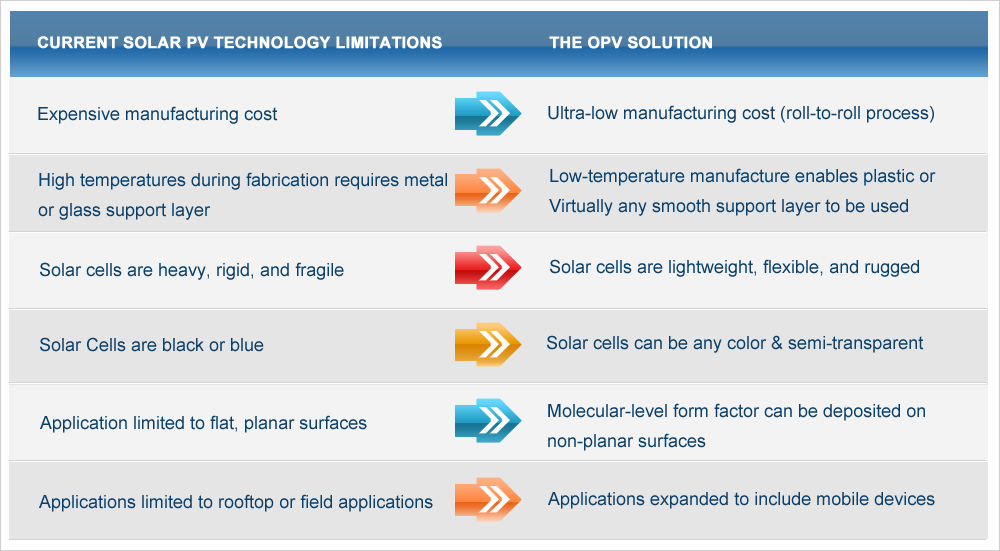Organic Photovoltaics are on the Rise
Organic electronics have gained rapid acceptance in the electronic display industry due to their low cost and ultra-thin, flexible form factor. Organic technology can also be applied to solar photovoltaics to completely redefine the way solar cells are fabricated and how and where solar power is used.
NanoFlex has developed the most extensive patent portfolio of small molecule organic photovoltaic, or OPV, technologies in the world. We believe that our intellectual property positions us as a gatekeeper for the future of the solar industry.
Organic Semiconductors Explained
Organic semiconductors are carbon-rich compounds with a structure tailored to optimize a particular function, such as responsiveness to a particular range of visible light. The use of organic compounds as semiconductors for commercial applications is relatively new. Organic semiconductors have elicited intense interest globally as they hold the promise of ultra-low cost and high performance along with a host of break-through new properties that unlock exciting new product opportunities in electronics, lighting, and photovoltaics.
Organic photovoltaics offer a number of advantages ranging from rapid, ultra-low-cost manufacturing to extremely thin, lightweight, and flexible form factors, which present opportunities for revolutionary advances in the acceptance and deployment of solar energy. There is no restriction on the size and shape of OPV devices, and every conceivable shape and form can be envisioned, with only human synthetic capability as the limiting factor. The devices can be in the form of fibers, woven to fabrics, bent or rolled as films on curved surface. The near two-dimensional nature of OPVs will present a substantial paradigm shift and it may take some time before it is accepted by the mass market.
Check out the table below to see more advantages of OPVs.
